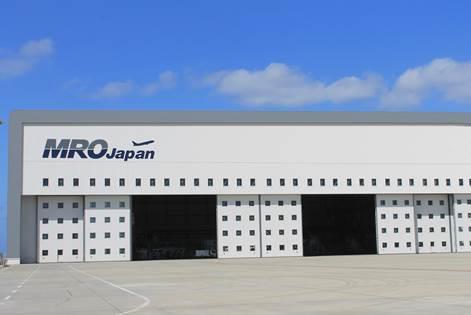Travel restrictions stemming from the coronavirus pandemic may have crimped international travel, but for one Japanese MRO company, it has presented an opportunity to look inward.
MRO Japan, an All Nippon Airways joint venture based on Okinawa island, had intended to begin line maintenance services to carriers from Asian countries from July, but plans have been shelved in light of the covid-19 outbreak.

It would have marked the company’s first foray into international business, after more than a year of servicing Japanese carriers — most with links to ANA.
MRO Japan vice president for corporate planning, sales and marketing Takashi Shimamura tells FlightGlobal in an email interview that the company then shifted its strategy to tap on more opportunities within the domestic market — and that it is starting to bear fruit.
One example is with Japanese carrier StarFlyer, with whom ANA has commercial cooperation.
The Kitakyushu-based airline currently sends its fleet of Airbus A320s to MRO Japan for light base maintenance, but ferries them overseas for heavy maintenance.
Recent travel restrictions have made it difficult for the carrier to send the aircraft to China for maintenance works.
Thus, MRO Japan stepped in, and since May has been offering its services for StarFlyer’s A320s. Shimamura adds that to date, about 10 A320s have been inducted for heavy maintenance.
Another domestic opportunity MRO Japan is looking into is defence MRO, which Shimamura notes is “less affected by the coronavirus outbreak”. The company has been in discussion with Japan Self Defence Forces-related entities for partnership opportunities, starting with maintenance assistance, before moving to line, and in the longer term, heavy maintenance work.
“Our concept is ‘your closest convenience store, [rather] than a faraway discount store’. This means being acknowledged by airlines as a close and highly convenient MRO of quality, which hopefully [is our] difference with our competitors.” - MRO Japan vice president for corporate planning, sales and marketing Takashi Shimamura
Despite pockets of opportunity, Shimamura concedes that the pandemic has disrupted MRO Japan’s growth strategy for the year.
Apart from its intended expansion to serve Asian carriers flying into Okinawa island, MRO Japan was also to have been working towards attaining EASA part 145 certification.
Again, travel restrictions have hindered the process, and the MRO will have no choice but to await a belated certification.
Beyond the coronavirus outbreak, MRO Japan is keen to tap maintenance opportunities for aircraft returned to lessors. The pandemic has accelerated such occurrences, and Shimamura tells FlightGlobal the MRO is keen to pursue these opportunities.
It has also made tweaks to its work processes to achieve better price competitiveness compared to its regional rivals, something Shimamura is acutely aware of.
One way MRO Japan hopes to tackle the issue is through maximising its capacity. To this end, the company is getting its mechanics to accept more work, “in order to maximise the capacity of MRO Japan’s facility, and to realise economics of scale, which [will lead] to [lowered] unit price and achieve a more competitive one, not to mention productivity enhancements in every aspect”, says Shimamura.
But while price might be a challenge, Shimamura insists that MRO Japan’s “unique and big advantage is Japanese quality”.
Likening MRO Japan to the concept of the ubiquitous Japanese convenience store, Shimamura says: “Our concept is ‘your closest convenience store, [rather] than a faraway discount store’. This means being acknowledged by airlines as a close and highly convenient MRO of quality, which hopefully [is our] difference with our competitors.”
MRO Japan began operations on Okinawa’s Naha airport in January 2019. Its customers include All Nippon Airways, which owns 45% of the company, as well as Peach, Solaseed Air and Star Flyer.
Story updated to correctly state StarFlyer’s maintenance works in the sixth paragraph.



























